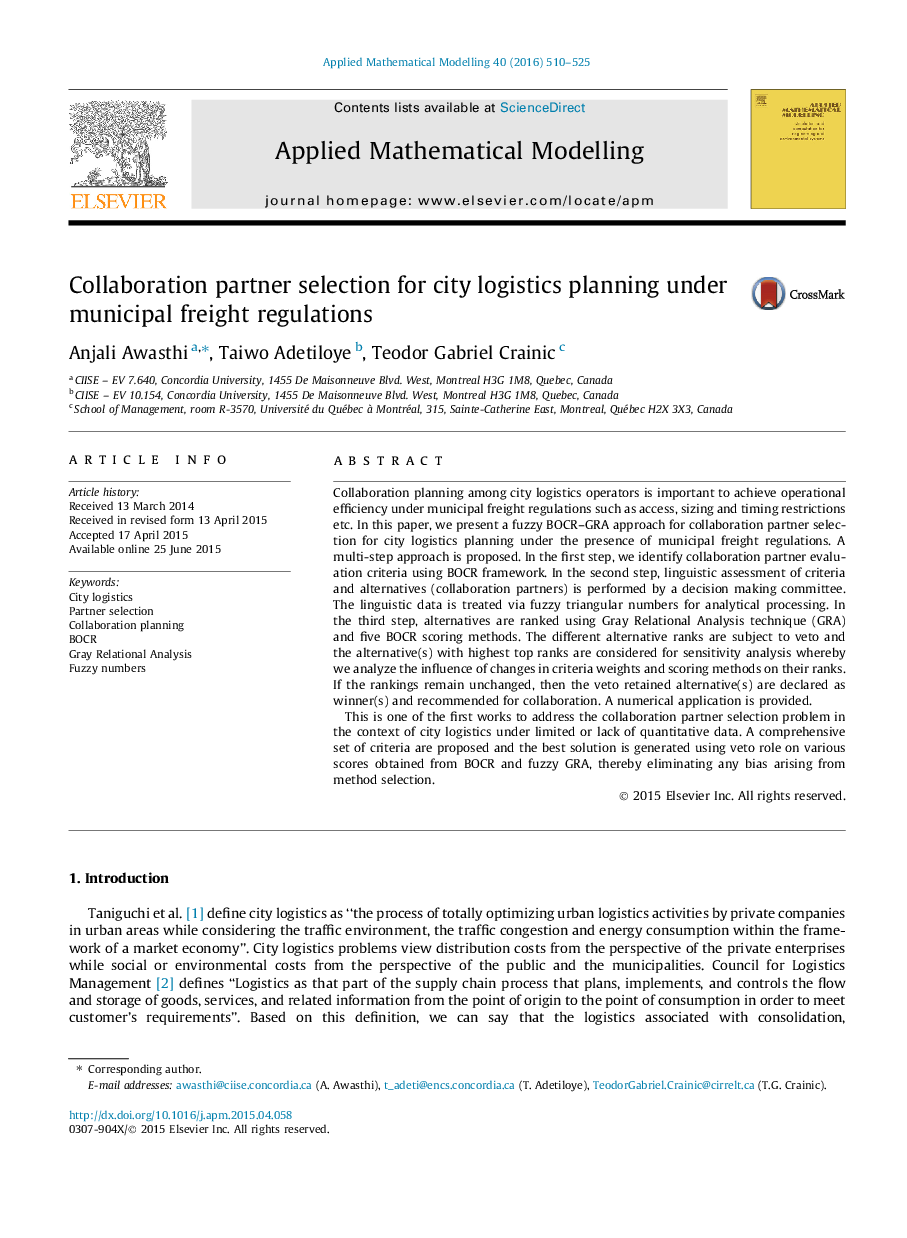| Article ID | Journal | Published Year | Pages | File Type |
|---|---|---|---|---|
| 1703374 | Applied Mathematical Modelling | 2016 | 16 Pages |
•We investigate the problem of collaboration partner selection in city logistics.•Benefits, costs, opportunities and risks is used to classify selection criteria.•Lack of quantitative data is addressed through linguistic ratings (fuzzy numbers).•BOCR and fuzzy GRA are used to generate rankings for collaboration partners.•Veto rule is applied on BOCR and fuzzy GRA results to select the best partner(s).
Collaboration planning among city logistics operators is important to achieve operational efficiency under municipal freight regulations such as access, sizing and timing restrictions etc. In this paper, we present a fuzzy BOCR–GRA approach for collaboration partner selection for city logistics planning under the presence of municipal freight regulations. A multi-step approach is proposed. In the first step, we identify collaboration partner evaluation criteria using BOCR framework. In the second step, linguistic assessment of criteria and alternatives (collaboration partners) is performed by a decision making committee. The linguistic data is treated via fuzzy triangular numbers for analytical processing. In the third step, alternatives are ranked using Gray Relational Analysis technique (GRA) and five BOCR scoring methods. The different alternative ranks are subject to veto and the alternative(s) with highest top ranks are considered for sensitivity analysis whereby we analyze the influence of changes in criteria weights and scoring methods on their ranks. If the rankings remain unchanged, then the veto retained alternative(s) are declared as winner(s) and recommended for collaboration. A numerical application is provided.This is one of the first works to address the collaboration partner selection problem in the context of city logistics under limited or lack of quantitative data. A comprehensive set of criteria are proposed and the best solution is generated using veto role on various scores obtained from BOCR and fuzzy GRA, thereby eliminating any bias arising from method selection.
